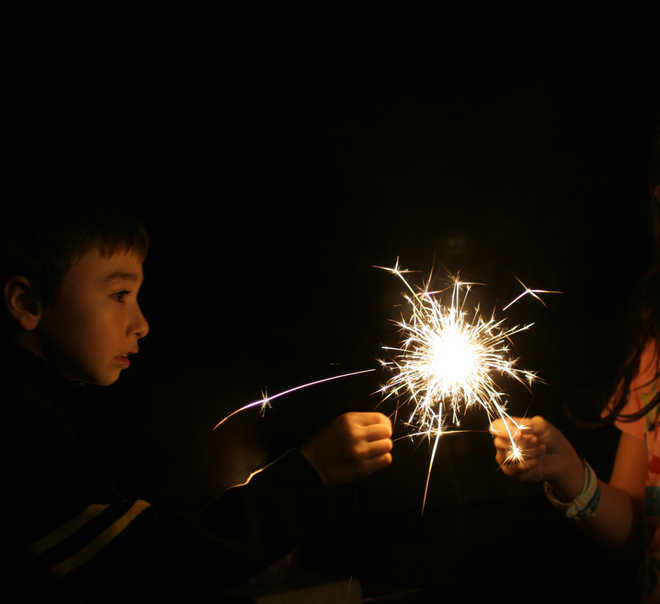Pushpa Girimaji
On Diwali day, while my teenage brother was lighting a ‘conical anaar’, it suddenly exploded, causing him burn injuries on his hand. Fortunately, he was not standing very close to it and was lighting it with a long sparkler, thus escaping with minor burn injuries. We never knew that the anaar could be so dangerous. Can we file a complaint against the manufacturer before the consumer court?
The ‘flower pots’ can well explode, if not made to quality specifications. In fact, if you look at the quality standards for conical anars formulated by the Bureau of Indian Standards, it specifies the quantity and the exact composition of the chemicals to be filled in the conical casing and says that while filling the pyrotechnic composition in the ‘flower pot’, it is most important to avoid formation of cavities or sections of loose powder or air bags that may cause explosion.
Obviously in this case, there was a problem with the quality of the pyrotechnic device — it could be the chemical used or its composition or the way it was filled. So you must not only lodge a complaint before the consumer court seeking compensation for the suffering undergone by your brother, but should also send complaints to the police and the Chief Controller of Explosives, Nagpur, asking them to investigate into the matter.
If the flower pots are made in India and purchased through a licenced dealer, you can file the complaint against only the manufacturer or both the manufacturer and the retailer. However, if what you have bought is a Chinese firecracker banned in India and smuggled illegally, you will have to haul up the retailer for not only selling a hazardous product, but also a prohibited one in violation of the law.
Having said that, I must mention that pyrotechnic devices of poor quality certainly spell danger, but even good quality firecrackers are not safe because accidents do happen.
Take ‘rockets’ for example. When lit, they are supposed to go straight up. In fact, the BIS standard for firework rockets stipulates that when fired from a vertical position supported by an external contrivance, the rocket shall not deviate to an angle of more than 10 degrees from the vertical. But not every rocket complies with that stipulation and, as a result, there have been cases of ‘rockets’ hitting the person lighting it or a passerby and casing serious injuries; or entering buildings through an open window or doorway.
Sparklers or ‘phool jharis’, considered to be ‘safe’, have also been responsible for burn injuries. In the United States, where the Consumer Product Safety Commission publishes every year, the number of deaths, injuries and fires caused by firecrackers, ‘bottle rockets’ and sparklers have been found to be responsible for burn injuries in most of the cases. Even those innocuous-looking ‘caps’ that come in individual packs or in rolls or strips and burst with a loud bang when fired from a toy gun, have caused eye and ear injuries in children. To put it in a nutshell, firecrackers not only cause fires, but also burn injuries and deaths. Almost every year, we read reports of deaths caused by firecrackers at places where they are being manufactured or stored. They also contribute to high levels of atmospheric pollution every year after Diwali. So it’s time we bid goodbye to firecrackers.
Have consumer courts dealt with this issue anytime?
Let me quote for you a case similar to yours. In M/S Anil Fire Works Factory Vs Mr Shivan Kumar, (RP no 2137 of 2003) the complaint was that Shivan Kumar had purchased 24 flower pots packed in four cartons from a licenced dealer and even procured a proper cash receipt for it. However, on Diwali day, when he lit it, the flower pot just exploded, resulting in Kumar sustaining severe burn injuries on his right hand, leading to his hospitalisation.
Subsequently, Shivan Kumar filed a complaint before the District Consumer Disputes Redressal Forum in Pune, seeking a compensation of Rs 50,000, besides Rs 25,000 towards plastic surgery. The Forum awarded Rs 50,0000 along with 18 per cent interest, calculated from the day of accident in 1997. The Maharashtra State Consumer Disputes Redressal Commission upheld this, but reduced the rate of interest from 18 to 12 per cent. The apex consumer court, in its order dated September 23, 2003, concurred with this view and dismissed the revision petition filed by the manufacturer and the dealer.
Unlock Exclusive Insights with The Tribune Premium
Take your experience further with Premium access.
Thought-provoking Opinions, Expert Analysis, In-depth Insights and other Member Only Benefits
Already a Member? Sign In Now










